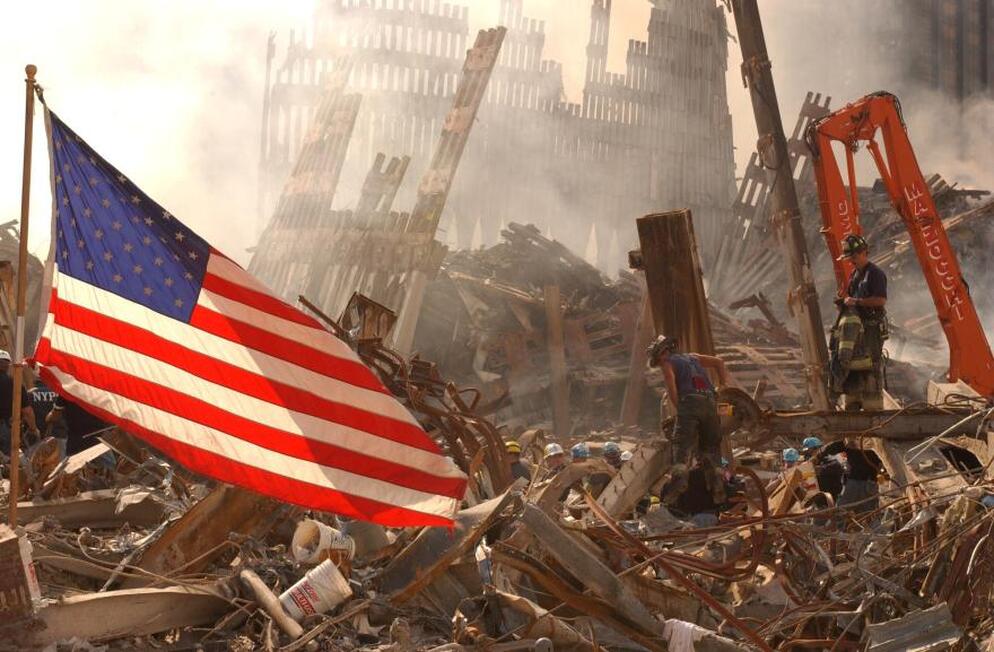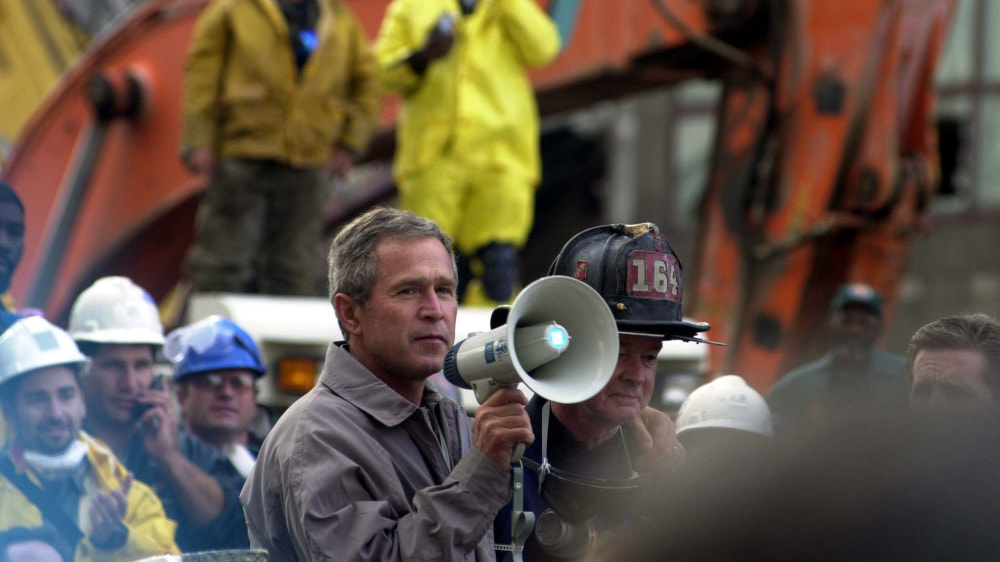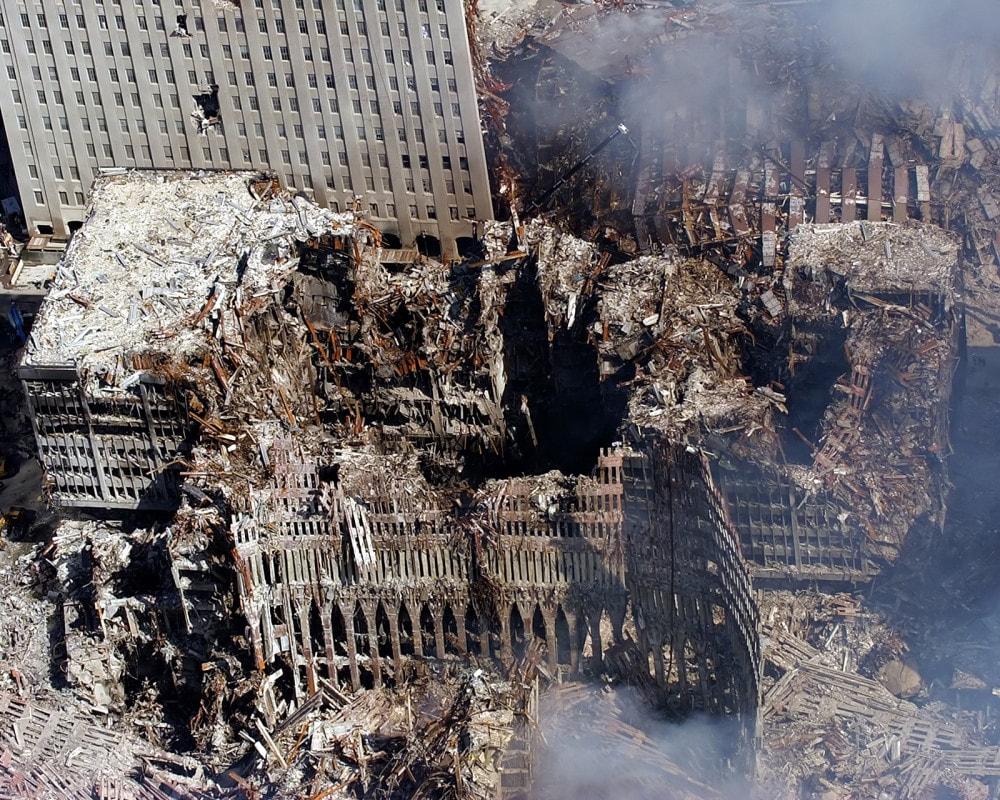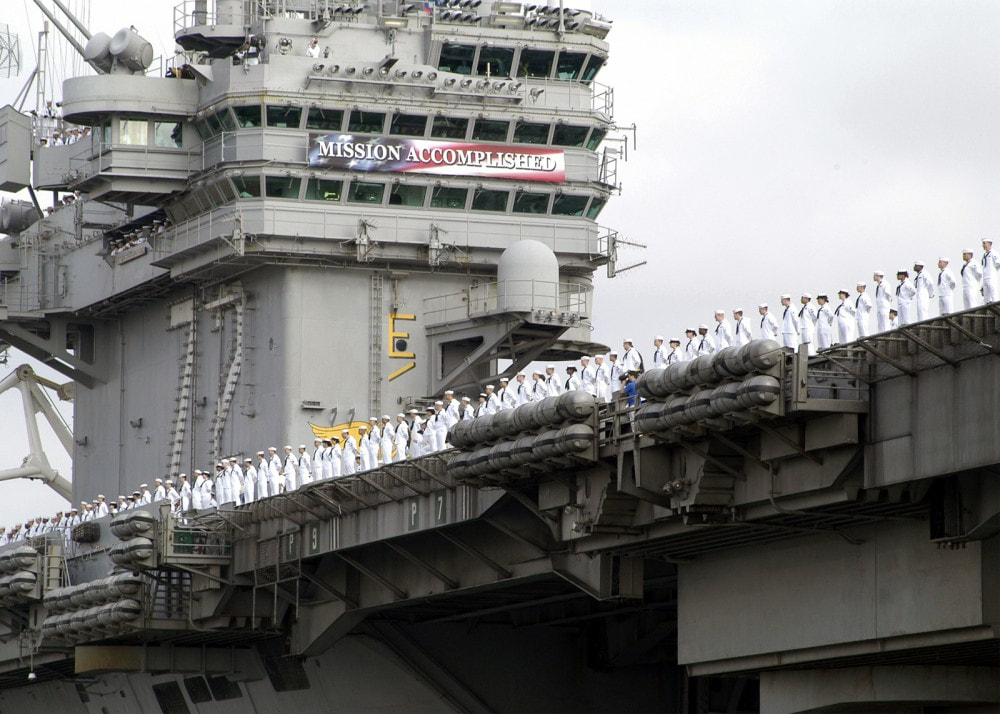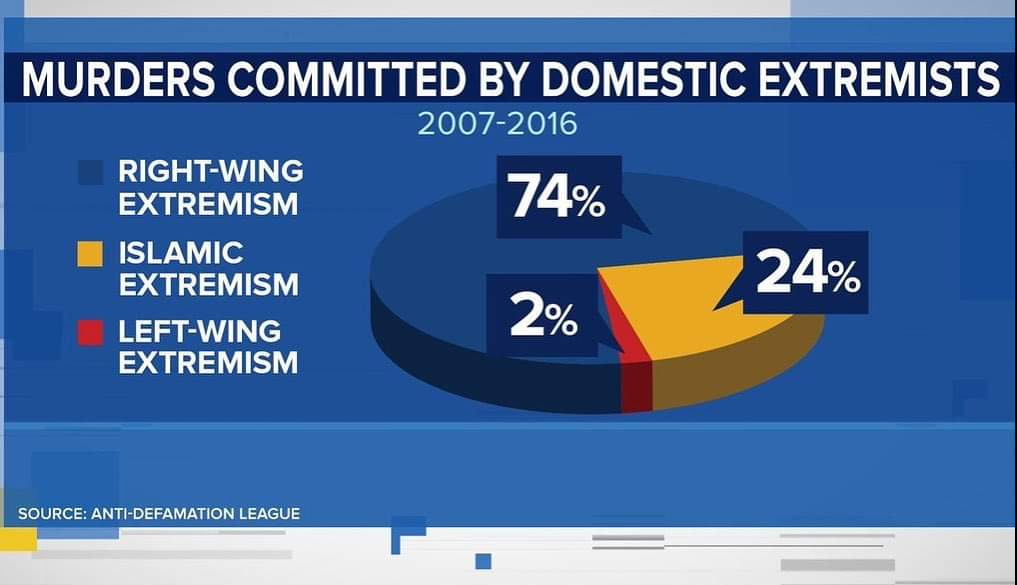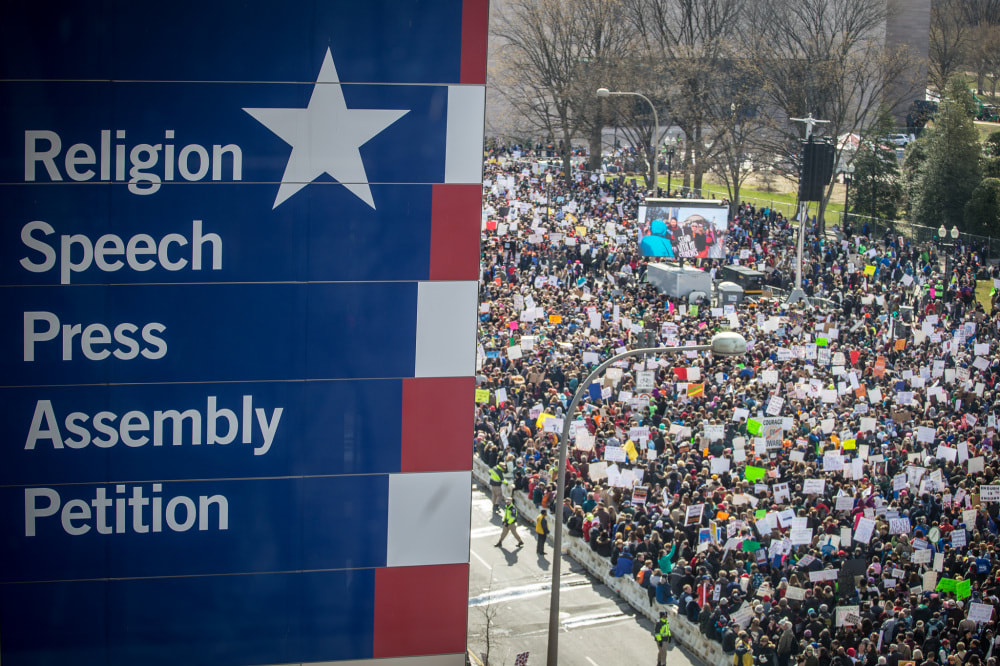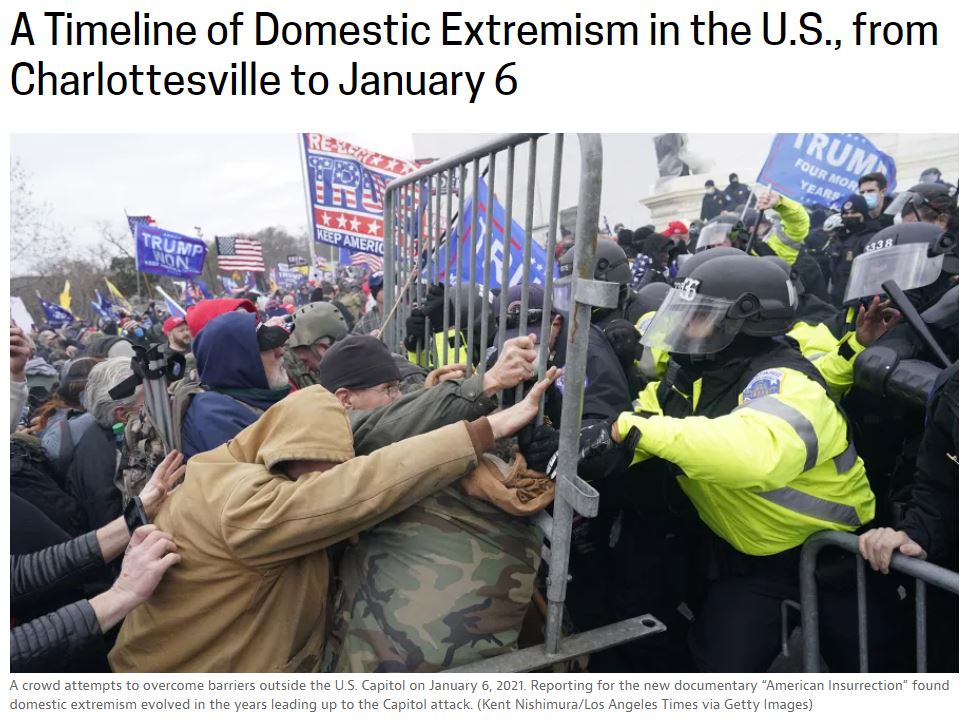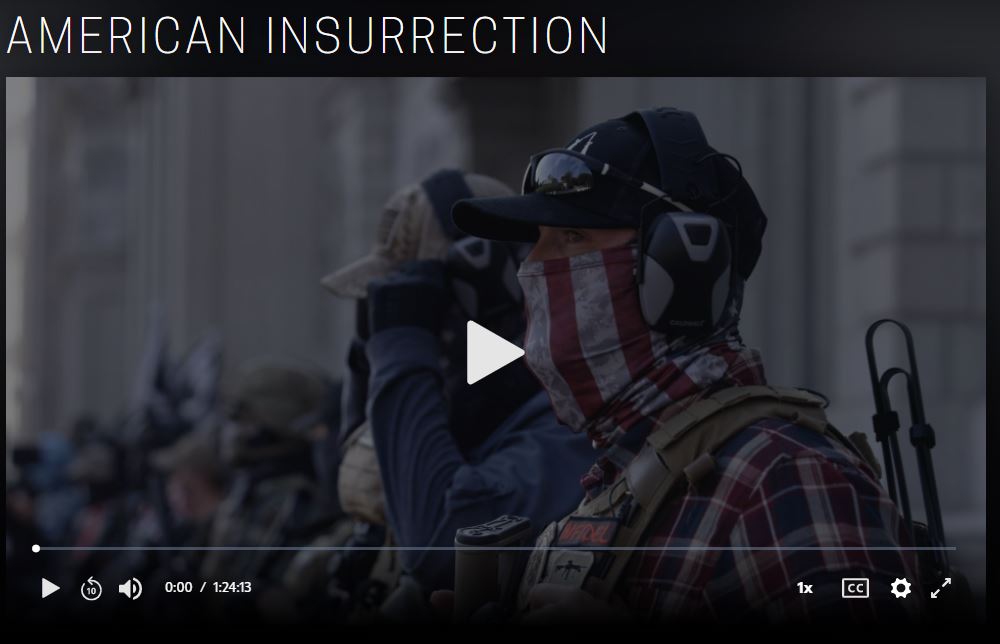The War on Terror
1990s-2020s
Contents
The War on Terror
Despite George W. Bush’s ill-conceived photo op under a Mission Accomplished banner in May 2003, combat operations in Iraq continued for years.
|
PBS Frontline: American Insurrection In the aftermath of the Jan. 6 assault on the U.S. Capitol, FRONTLINE, ProPublica and Berkeley Journalism’s Investigative Reporting Program team up to examine how far-right extremist groups have evolved in the wake of the deadly 2017 Charlottesville rally — and the threat they pose today.
|
Review:
- Who was responsible for the 9/11 terrorist attacks and what damage was caused?
- Why did the United States invade Afghanistan to remove the Taliban from power in 2001?
- Why did the United States invade Iraq to remove Saddam Hussein from power in 2003?
- What happened at Abu Ghraib prison, and how did it tarnish America's global reputation?
- What caused the emergence of the Islamic State?
- What acts of domestic terrorism have afflicted the United States?
- How has gun violence affected the United States in recent years?
- What led to the Capitol Insurrection?
Assignments and Readings
|
|
Your browser does not support viewing this document. Click here to download the document.
| ||||||
|
|
Your browser does not support viewing this document. Click here to download the document.
| ||||||
Primary Sources
9/11 Commission Report, “Reflecting On A Generational Challenge” (2004)
On July 22, 2004, the National Commission on Terrorist Attacks Upon the United States—or, the 9/11 Commission—delivered a 500-plus-page report that investigated the origins of the 9/11 attacks and America’s response and offered policy prescriptions for a post-9/11 world.
George W. Bush on the Post-9/11 World (2002)
In his 2002 State of the Union Address, George W. Bush proclaimed that the attacks of September 11 signaled a new, dangerous world that demanded American interventions. Bush identified an “Axis of Evil” and provided a justification for a broad “war on terror.”
Ground Zero (2001)
A worker stands in front of rubble from the World Trade Center at Ground Zero in Lower Manhattan several weeks after the September 11 attacks.
On July 22, 2004, the National Commission on Terrorist Attacks Upon the United States—or, the 9/11 Commission—delivered a 500-plus-page report that investigated the origins of the 9/11 attacks and America’s response and offered policy prescriptions for a post-9/11 world.
George W. Bush on the Post-9/11 World (2002)
In his 2002 State of the Union Address, George W. Bush proclaimed that the attacks of September 11 signaled a new, dangerous world that demanded American interventions. Bush identified an “Axis of Evil” and provided a justification for a broad “war on terror.”
Ground Zero (2001)
A worker stands in front of rubble from the World Trade Center at Ground Zero in Lower Manhattan several weeks after the September 11 attacks.
Slideshows
Videos
|
|
Digital History Textbook
The 21st Century
This chapter examines the disputed election of 2000; the presidency of George W. Bush; and the American responses to the terrorist attacks of September 11th, 2001.
The Disputed Election of 2000
The Presidency of George W. Bush
September 11, 2001
This chapter examines the disputed election of 2000; the presidency of George W. Bush; and the American responses to the terrorist attacks of September 11th, 2001.
The Disputed Election of 2000
The Presidency of George W. Bush
September 11, 2001
